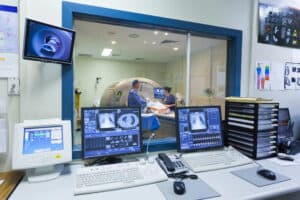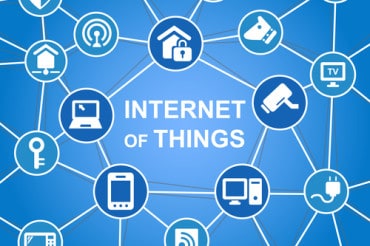
IoT gives medical device manufacturers the ability to reduce their maintenance costs for products in the field and enhance customer service.
IoT can change the way manufacturers of complex diagnostic medical equipment support their products in the field, engage with customers, and more.
How? Equipment, such as devices that perform MRIs (magnetic resonance imaging), Ultrasound tests, CT scans (computed tomography scan), and Positron Emission Tomography (PET), and more are complex and require constant adjustments, fine tuning, and service.
Where does IoT come in? Manufacturers have long leveraged IoT to improve the operations of equipment on their production lines. And in a similar way, IoT can be leveraged to monitor and maintain diagnostic medical equipment in hospitals, clinics, and academic medical centers.
See also: Manufacturers Find New Applications as IoT Devices Proliferate
Using IoT to change the relationship with the customer
For years, high-end diagnostic medical equipment makers had a single engagement (the sale) with the customer. Many offered service packages as an add-on. But it was typically treated as a standalone item. And often, the customer would go with a third party for all their service.
Including IoT with a device opens the door for a more united offering, one that includes both the device plus service. That alone has the potential to increase revenues in that the money a customer might spend with a third party is now part of the initial deal. The end result is that there is a continuous engagement with the customer over the lifetime of a high-end diagnostic device.
And IoT delivers other bottom-line benefits. For example, remote monitoring capabilities can help manufacturers make more efficient use of their service staff. In particular, knowing the exact nature of a problem gives a manufacturer the information needed to send the right technician with the right parts, tools, and software to a site for repairs. In contrast, the lack of such information often would compound costs and delay repairs. Often, a technician would be dispatched to a site just to evaluate a problem, or they would arrive without the necessary parts (or knowledge) to repair a unit.
Elimination downtime with predictive maintenance
Just as manufacturers have used health monitoring data from sensors and IoT devices for equipment on their production lines, they can also use that data to better support products in the field.
For example, the data could be used to support preventive and predictive maintenance efforts. In that way, equipment problems can be spotted in the making and corrected before the device has to be taken offline for repairs.
That is an essential capability in modern medical facilities. Diagnostic tests are tightly scheduled to maximize billing and revenues. To put the numbers into perspective, the National Library of Medicine estimates there are 40 million MRI scans a year in the U.S.
In any one facility, a broken piece of diagnostic equipment disrupts the clock-like schedule of tests. As a result, patients are greatly inconvenienced and must reschedule their tests. Worse, the delay in getting the results of a test due to out-of-service equipment means doctors must delay the diagnosis and plan of action to help their patients.
Preventive and predictive maintenance can help reduce or eliminate downtime and thus keep a medical facility’s diagnostic testing pipeline working at optimal levels.
Overall, integrating IoT with high-end medical diagnostic machines enhances the quality, efficiency, and accessibility of healthcare services, benefiting both patients and healthcare providers.








